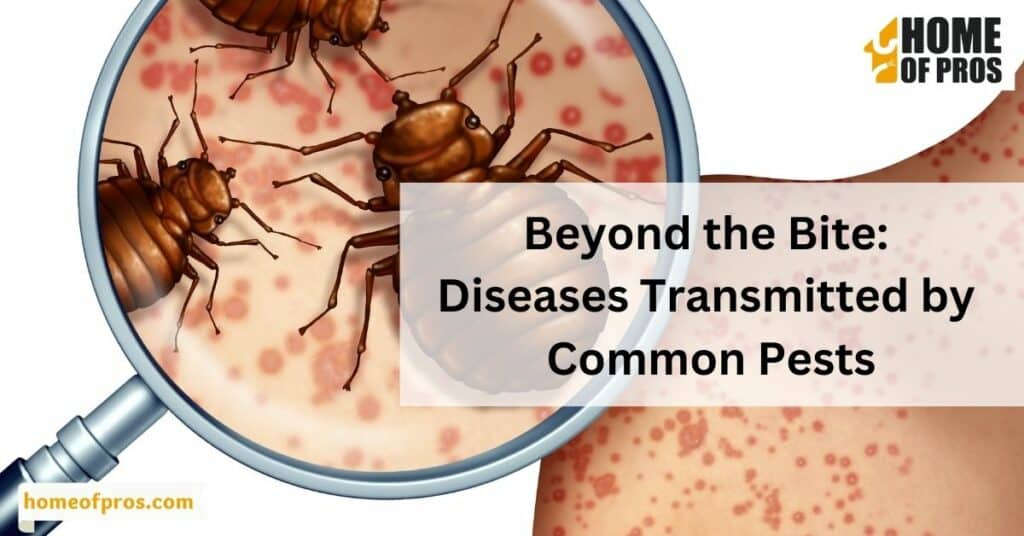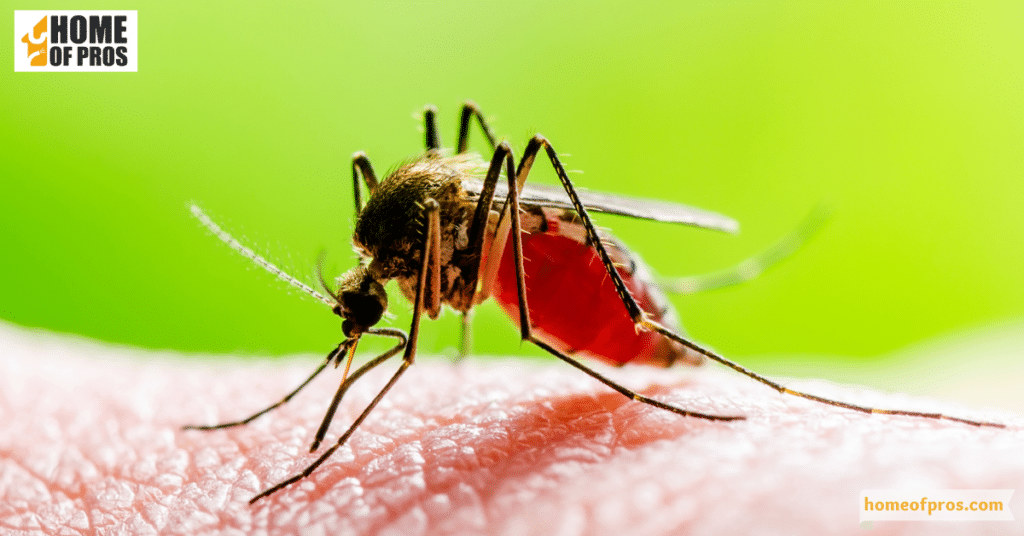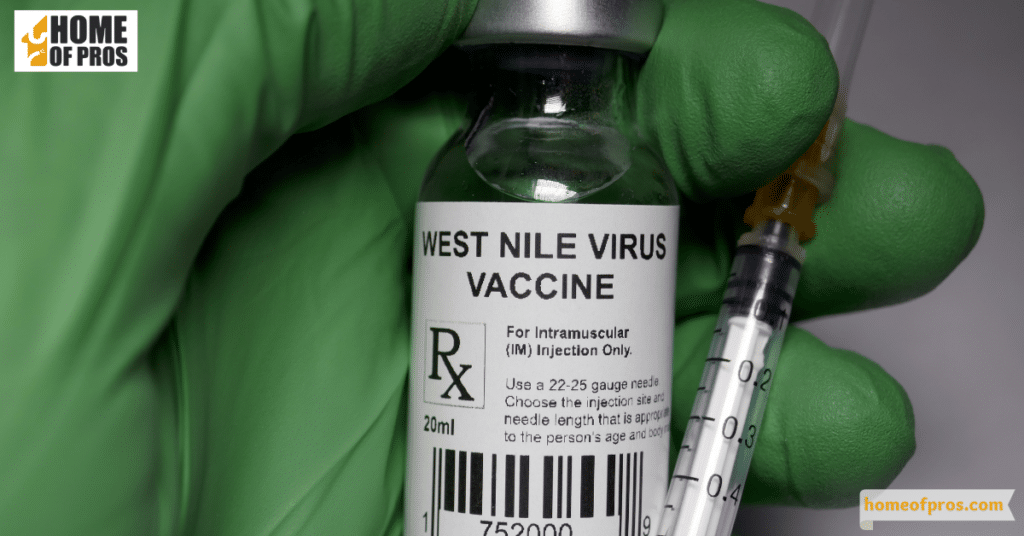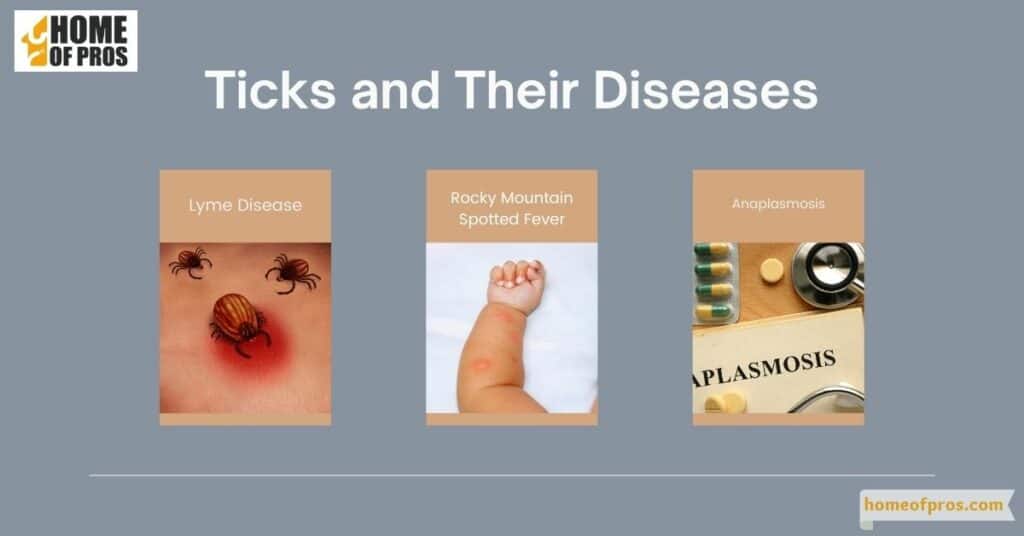Common pests like mosquitoes, ticks, and fleas are more than just nuisances; they can also transmit serious diseases. Mosquitoes, for instance, are notorious for spreading diseases such as malaria, Zika virus, and dengue fever. Understanding the risks associated with these common pests is crucial for protecting our health and well-being.
Common pests may be a part of our daily lives, but their impact on human health extends far beyond annoyance. In this article, we’ll uncover the diseases these pests transmit and why understanding them is crucial. Get ready for an informative journey that sheds light on the hidden dangers beyond the bite.

The Menace of Mosquitoes
Mosquitoes, those tiny buzzing nuisances, pose a far more significant threat than meets the eye. Beyond their itchy bites lies a perilous world of diseases. In this section, we’ll dive into the menace of mosquitoes, exploring the diseases they transmit and the global impact on public health.
1. Malaria
Malaria, a disease caused by Plasmodium parasites and transmitted through the bite of infected Anopheles mosquitoes, has left an indelible mark on human history. It continues to devastate populations, primarily in sub-Saharan Africa, where it claims hundreds of thousands of lives annually. The effects of malaria extend far beyond the immediate suffering it inflicts, as it hampers economic development, leads to chronic illness in survivors, and places immense pressure on healthcare systems in affected regions.
2. Zika Virus
Zika virus, once a relatively obscure pathogen, gained international attention due to its profound impact on newborns. This mosquito-borne virus, primarily transmitted by Aedes mosquitoes, can lead to microcephaly in infants, a condition marked by a significantly smaller-than-normal head and severe developmental challenges. Its rapid global spread underscored the interconnectedness of our modern world, demanding swift and coordinated responses to mitigate its impact.

3. Dengue Fever
Dengue fever, known for its excruciating joint and muscle pain, is transmitted primarily by Aedes mosquitoes and has emerged as a significant public health challenge. Its incidence has risen dramatically in recent years, making it a growing concern in tropical and subtropical regions, including parts of Asia and the Americas. The disease places a considerable burden on healthcare systems and can lead to severe complications, including dengue hemorrhagic fever, which can be fatal if left untreated.
4. West Nile Virus
West Nile virus, transmitted by Culex mosquitoes, poses neurological implications for those it infects. Although the majority of individuals infected with West Nile virus experience mild or no symptoms, a small percentage develop serious neuroinvasive illnesses such as encephalitis or meningitis. This virus once limited to Africa, Europe, and the Middle East, has now become a concern in North America as well, highlighting the dynamic nature of mosquito-borne diseases.

Ticks and Their Diseases
Amidst the natural beauty of outdoor adventures, there exists a lurking menace that often goes unnoticed until it’s too late—ticks. These minuscule arachnids can transmit diseases with significant health implications. In this section, we delve into the world of ticks, exploring the diseases they carry, their life cycle, common habitats, and essential tips for prevention and early detection.

- Lyme Disease: Caused by Borrelia burgdorferi and transmitted by black-legged ticks, Lyme disease presents with a range of symptoms, including fever, fatigue, joint pain, and a distinctive “bull’s-eye” rash.
- Rocky Mountain Spotted Fever: This potentially life-threatening illness, caused by Rickettsia rickettsii, is transmitted by various tick species and can lead to high fever, severe headaches, and a spotted rash.
- Anaplasmosis: Transmitted by black-legged ticks as well, Anaplasmosis shares some symptoms with Lyme disease but can cause severe complications, making early detection vital.
While ticks may be tiny, their potential impact on your health is significant. By staying informed about the diseases they carry, their life cycle, and their habitats, you can safeguard yourself and your loved ones from the hidden dangers that these arachnids pose. Remember, prevention and early detection are your strongest allies when venturing into tick-prone areas. Stay safe and enjoy the great outdoors responsibly.
Tick-Borne Disease Prevention and Early Detection
As we venture into the great outdoors, enjoying nature’s beauty and serenity, it’s crucial to be aware of the lurking threat posed by ticks. These tiny arachnids can transmit diseases that have substantial health implications. To safeguard your well-being, this section provides essential guidance on tick-borne disease prevention and early detection.
Prevention and Early Detection Checklist:
| Prevention Measures | Early Detection |
|---|---|
| Wear protective clothing, including long-sleeved shirts, long pants, and closed-toe shoes, during outdoor activities. | Be vigilant for symptoms such as fever, fatigue, joint pain, or unusual rashes. |
| Apply insect repellents containing DEET to exposed skin and clothing. | After potential tick exposure, perform thorough tick checks on yourself and your family. |
| Perform tick checks on pets, as they can carry ticks into your home. | Seek medical attention promptly if you suspect a tick encounter and inform your healthcare provider. |
When exploring the great outdoors, the joy of nature should be paired with a commitment to staying safe from tick-borne diseases. By following these prevention measures and remaining vigilant for early symptoms, you can minimize the risks associated with tick encounters.
Fleas: Not Just a Pet Problem
Fleas, often associated with pet discomfort, pose a significant health risk to both humans and animals. They can transmit diseases like bubonic plague and typhus, with potentially severe consequences. To protect against these diseases, it’s essential to maintain strict flea control and prevention measures for your home and pets, including regular grooming, vacuuming, and using effective flea-preventive products. Understanding the risks and taking proactive steps can safeguard the health of both you and your pets from these tiny yet potentially dangerous insects.

The Impact on Global Health
While common pests like mosquitoes, ticks, and fleas may seem like localized nuisances, the diseases they transmit have a far-reaching impact on global health. In this section, we’ll delve into the breadth and importance of diseases carried by these pests, examining the regions most heavily affected and the profound socio-economic consequences.
Global Impact of Diseases Transmitted by Common Pests:
| Disease | Regions Affected | Socio-economic Consequences |
|---|---|---|
| Malaria | Sub-Saharan Africa, parts of Asia, and the Americas | High mortality rates, economic burden due to healthcare costs, and lost productivity. |
| Zika Virus | Worldwide, with outbreaks in South America and beyond | Birth defects, strain on healthcare systems, and economic impact due to tourism declines. |
| Dengue Fever | Tropical and subtropical regions globally | High medical costs, reduced workforce productivity, and increased healthcare resource utilization. |
| West Nile Virus | North America, Europe, the Middle East, and beyond | Neurological complications, long-term disability, healthcare costs, and potential public health crises. |
International Efforts in Combating Pest-Borne Diseases:
International organizations and initiatives play a vital role in mitigating the impact of these diseases. Organizations like the World Health Organization (WHO) and the Centers for Disease Control and Prevention (CDC) collaborate with governments and non-governmental organizations to provide resources, guidance, and expertise. Initiatives like the Roll Back Malaria partnership and the Global Vector Control Response focus on prevention, research, and capacity-building to combat these diseases globally.

Protecting Yourself and Your Community
In the ongoing battle against diseases transmitted by common pests, safeguarding health is not just an individual endeavor; it’s a shared responsibility that involves both personal protective measures and community-wide efforts. To protect yourself and your community, use insect repellents, don proper clothing, and be aware of peak pest activity hours.
Support vector control programs that reduce pest populations, and engage in community-based initiatives that raise awareness, eliminate breeding grounds, and establish surveillance for early disease detection. Together, we can create a culture of health and safety that mitigates the risk of pest-borne diseases, fostering a healthier and safer environment for all.

Conclusion
In the ongoing battle against diseases transmitted by common pests, safeguarding health is not just an individual endeavor; it’s a shared responsibility that involves both personal protective measures and community-wide efforts. To protect yourself and your community, use insect repellents, don proper clothing, and be aware of peak pest activity hours. Support vector control programs that reduce pest populations, and engage in community-based initiatives that raise awareness, eliminate breeding grounds, and establish surveillance for early disease detection.












